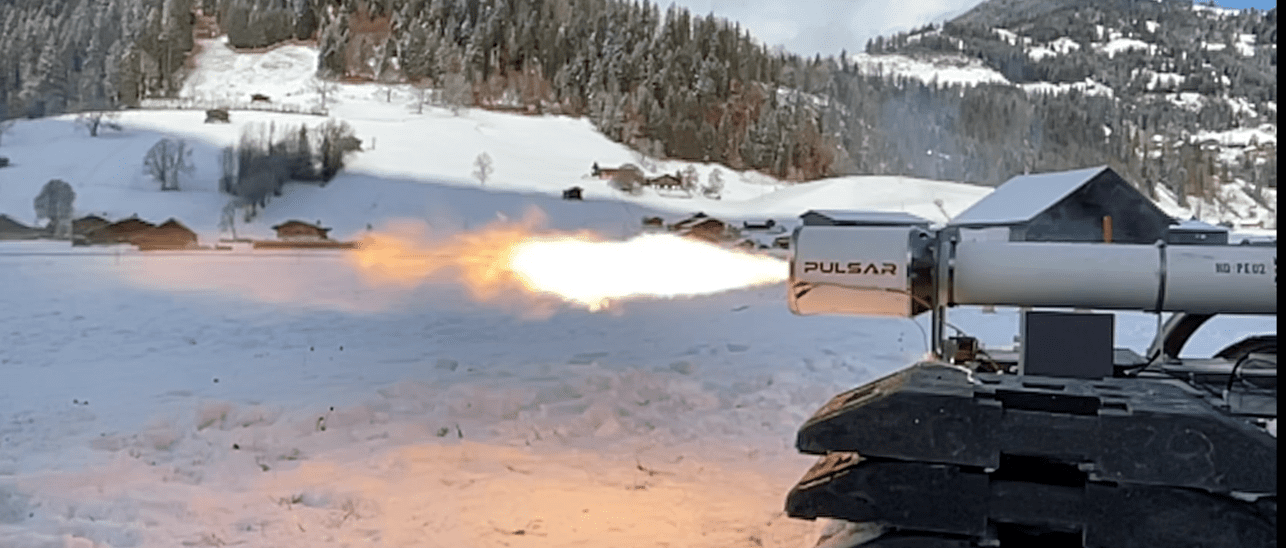Pulsar Fusion test planet-saving clean energy hybrid rocket engine

We look into Pulsar Fusion’s new hybrid rocket engine which marks the advancement of green technology in space travel.
On 26th November 2021, Pulsar performed its first demonstration of the green (non-toxic) engine in Gstaad, Switzerland. The British company chose Switzerland to perform these test runs due to its support structure for environmentally friendly space technology research. It has now planned more tests in 2022, with European space clients invited to attend.
A video of the latest demonstration has been made available by Pulsar:
The importance of renewable energy has been evident in recent years as the world focus on its carbon footprint and global warming. As international space tourism has nearly doubled in the last ten years, the pollution level emitted from this sector has also dramatically increased.
This increase is primarily caused by burning rocket fuels that release gases and soot particles (black carbon) into the upper atmosphere. These harmful deposits in the atmosphere then contribute to ozone depletion and global warming.

Solid-fuel rockets have been the main cause of space travel emissions, and many have now moved to a greener hydrogen-based propulsion system. These engines still emit a huge water vapor cloud, and these are some of the most significant contributors to the greenhouse effect though they only stay in the atmosphere for a day or two.
Pulsar Fusion has spent nine years researching how nuclear fusion technologies can be used for interplanetary travel; their main goal is to produce a hyper-speed propulsion engine. The company has stated that if it is successful, this could halve the travel time from Earth to Mars.
Pulsar Fusion has previously tested rockets in the UK and was awarded government funding in September; they have made critical changes since then. The Switzerland tests ran the engine on liquid oxidizer compared to only gas in the UK, and they supercharged the flow with a nitrogen pressurant. Due to this, the engine’s impulse was increased by nearly a factor of 10, and the chamber pressure jumped from around 5 bar to over 20 bar on the first test and then almost 50 bar on the second one. This technology has never been used in the UK and impressively creates just over a tonne of thrust.

During the tests, the engine speeds hit Mach 7, meaning this engine would launch a small rocket or power the rocket’s upper stage with a large booster into orbit. This becomes more impressive when you learn about where the fuel comes from.
Pulsar’s green (non-toxic) hybrid rocket engine combusts nitrous oxide (N2O) oxidizer and high-density polyethylene (HDPE) fuel and oxygen. These are some of the cleanest available to the space industry, producing an exhaust of essentially water vapor and having a shallow production energy requirement, resulting in one of the lowest carbon footprints in the world for an engine of this size.
The HDPE can be obtained from recycled plastic, and the two fuels burn together to produce a non-toxic plume. Reusing this waste plastic can dramatically reduce landfill sites; many are aware of the need to do this as new plastic waste products appear worldwide, such as the recently famous plastic bricks created in Kenya.
In many ways, this is a significant step forward to saving our planet from global warming and reducing waste, especially when compared with other rocket technology. There is still the problem of water vapor being a significant danger in the atmosphere as it causes extreme weather conditions that can be deadly.

The Pulsar Fusion team with Richard Dinan, pictured third left
CEO Richard Dinan commented: “British companies with space ambitions must be international and fast-moving, achieving technological milestones on time and budget while being environmentally conscious. Pulsar’s objective is to build world-class technologies that serve as a force for good.”
Pulsar is presently in contact with UK launch sites such Machrihanish, near Cambletown on Argyll, where it is likely they will start with further static tests and low altitude flights before moving to one of the other sites such as Space Hub Sutherland on the mainland or Spaceport-1 on the Hebrides for high altitude flights.
Read More:
- SpaceX is recycling everything even its astronauts in latest launch
- What you need to know from Science and Innovation at COP26
- World Environment Day: How tech can drive green energy growth
With the promise of a prototype expected to be ready in 2025, Pulsar also presented a new model that enables the manufacture of the rocket engines at record lead times, enhancing safety. Due to the design, these engines have relatively benign failure modes compared to conventional liquid propulsion engines.
Click here to discover more of our podcasts
For more news from Top Business Tech, don’t forget to subscribe to our daily bulletin!
Follow us on LinkedIn and Twitter